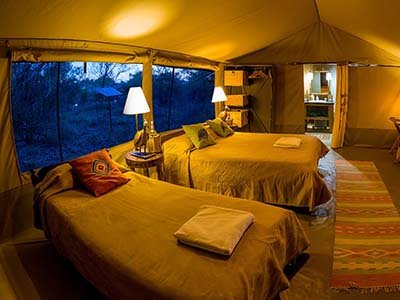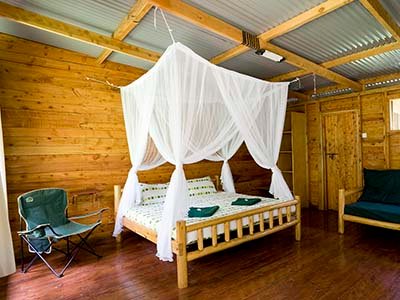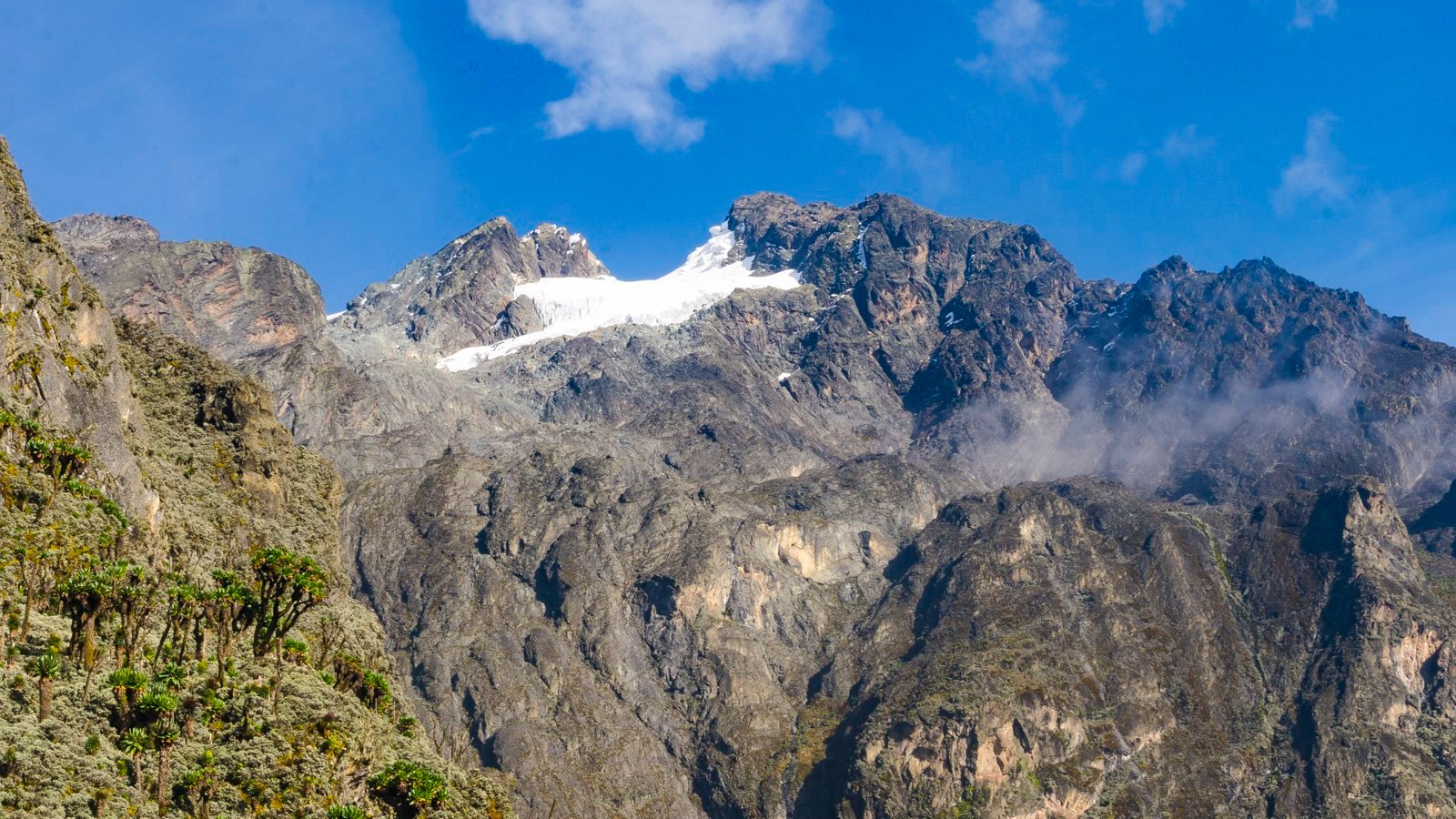Rwenzori Mountains National Park
The Rwenzori Mountains National Park is situated on the boundary between Uganda and the Democratic Republic of the Congo. It is managed Uganda Wildlife Authority, a governmental organisation. It is close to Queen Elizabeth National Park to the east and Semuliki National Park is in the north
The Rwenzori Mountains are a group of ice-capped peaks that rise above the dry plains just north of the equator.
The park has glaciers, snowfields, waterfalls, lakes, and one of Africa’s most beautiful mountainous vistas. The Margarita Portal, the park’s highest point, is located there. Peaks in the area reach a height of 5,109 metres above sea level, and there is snow there all year long.
The Alexandrine geographer Ptolemy first recognised the Rwenzori Mountains, commonly referred to as the “Mountains of the Moon,” in AD 150. The Margherita Mountain, one of Mount Stanley’s twin peaks, is Africa’s third-highest peak at 5,109 metres (16,762 feet), making these mountains taller than the Alps. The park is home to Mount Speke and Mount Baker, Africa’s fourth- and fifth-tallest summits, respectively.
The Rwenzori Mountains were first shown on a modern map by explorer Henry Stanley on May 24, 1888. Stanley gave the mountains the name “Ruwenzori,” which is a local title that means “rainmaker” or “cloud-king” in Swahili. Since then, mountaineers and intrepid visitors have made the mountains a favourite holiday spot.
The Rwenzori Mountains are mostly covered by the park, making it a great place to start your exploration of the area. The summits may be reached through a number of routes from Kilembe, Mihunga, and Katebwa. Although scaling the mountain is difficult, the benefits are great. Without a doubt, your stay in the Rwenzori area will rank among your most difficult and rewarding triumphs.
With the aid of local Bakonzo porters and guides who are experienced with the area, the peak may be climbed. Ms. Beryl Park, who is 78 years old, became the oldest person to reach the top of Margherita Peak, demonstrating the commitment and effort needed to conquer this peak. Because to the icy, wet, and hazardous terrain, getting to (and leaving from) Mount Stanley takes a week or longer. Yet, for those looking for a genuinely exceptional and unforgettable experience, the trip is definitely worth it.
In addition to climbing, the park provides tourists with a number of other activities, such as birding, hiking, and nature walks. Wildlife from different species, such as chimpanzees, baboons, and forest elephants, may be found in the park. There are over 177 different bird species identified in the park, many of which are peculiar to the Albertine Rift.
In higher elevations, heath and moorland take the place of montane forest and bamboo forests in the park’s vegetation. The limited vegetation at the peak gives way to snow and ice. The park is a well-liked location for both nature enthusiasts and adventure seekers because of its breathtaking scenery and distinctive flora and fauna.
If you want to explore the “Mountains of the Moon.” you must go to Rwenzori Mountains National Park. Although though the ascent to the summit may be difficult, the benefits are great, including breathtaking views of the surrounding area and a genuine sense of accomplishment at reaching the top. The park is a refuge for nature lovers, birdwatchers, and wildlife enthusiasts because to its distinctive flora and fauna. The Rwenzori Mountains National Park is certain to surpass your expectations, whether you’re an experienced climber or an adventurous visitor seeking a distinctive experience.
WILDLIFE
The Rwenzori Mountains National Park, located in Uganda, is a haven for wildlife enthusiasts. The park boasts a diverse range of fauna, including 217 bird species, 9 reptile species, and 6 amphibian species. The wildlife in the forest zone is particularly intriguing, with mammals such as elephants, chimpanzees, buffaloes, bushbucks, giant forest hogs, and leopards being present but seldom spotted while hiking. However, visitors can easily spot blue monkeys and the rare Rwenzori colobus monkey during their visit. It is not uncommon to come across elephant droppings while exploring the forest zone, and the calls of chimpanzees can often be heard in the distance. The park is home to many bird species of importance, such as the Rwenzori double-collared sunbird, strange weaver, Rwenzori turaco, Rwenzori batis, handsome francolin, Rwenzori nightjar, Archer’s robin-chat, and red-throated alethe.
The higher altitude areas of the park are home to rare and endangered wildlife species such as the lammergeyer, which can be seen swooping overhead. The scarlet-tufted malachite sunbird can also be found in the park, feasting on the nectar of lobelia flowers.
While the wildlife of the park is fascinating, it is the park’s flora that is the major attraction. The park’s altitude of over 5000 metres provides the perfect environment for a unique “botanical big game,” which is only found in East Africa’s highest mountains. The park’s vegetation can be divided into different zones, with the montane forest located in the lowest area between the park’s perimeter and the 2500-meter contour. This zone then gives way to bamboo at an altitude of 2500–3000 meters, followed by groves of Rapanea and enormous heathers draped in garishly coloured mosses and lianas, epiphytes, and lichens at an altitude of 3000–4000 meters. Above 4,000 meters, the slope opens up into moorland that is peppered with the Rwenzori’s famous enormous lobelia and grass species. Some of these species are endemic and iconic to the region.
Visitors to Rwenzori Mountains National Park can embark on a variety of activities such as hiking, trekking, and bird watching. The park has several trails that cater to different levels of fitness and experience. Visitors are advised to be accompanied by a knowledgeable guide who knows about the park’s wildlife and flora. Overall, the park is a must-visit destination for anyone interested in exploring the natural wonders of Uganda.
LOCAL PEOPLE
The Rwenzori Mountains National Park is surrounded by numerous long-established communities. The majority of the population is of Bakonzo descent, while there are also Bamba, Batooro, and Basongora people in the area.
The Bakonzo are the largest ethnic group in the Rwenzori foothills, where they make up the vast majority of the local population. People farm for a living, primarily growing staples like corn, coffee, beans, and bananas. Animal husbandry is another way of life for the Bakonzo, who keep sheep, goats, and cows. They are famous for the traditional music, dances, and delicacies that are part of their culture. Their culture and faith are centred around the mountain.
Also held in high regard by the locals is the power of Kitasamba, a chief deity whose natural habitat is a mountain’s top and whose name is never uttered there. On the mountain, 18 sacred Konzo locations have been located, mapped, and designated as places of devotion.
The Bamba are a lowland population that lives surrounding the park and relies mostly on farming. Cattle, goats, and sheep are among the many animals and birds they tend, and they also cultivate crops like corn, cassava, and beans. The Bamba are famous for their intricate baskets and other works of art.
The Batooro people, who live in western Uganda, frequent this park. Many of them make a living in agriculture, growing things like bananas, coffee, and maize. The Batooro are well admired for their rich cultural traditions, which include their music and dances.
The Basongora are mostly pastoralists who farm sheep, goats, and cattle. They go around from place to place in search of pastures for their animals. They practise subsistence agriculture by growing staples including beans, millet, and maize.
All of these communities benefit from the park’s facilities. For instance, they gather materials for construction, such as bamboo, poles, grass, and ropes, from the park. In addition to medicinal plants like Prunus africana, they have access to nutritious foods like wild honey, bush meat, and mushrooms inside the park. In addition to the park’s role as a water catchment area and precipitation generator, locals also benefit from the park’s ability to attract tourists and their spending, which in turn generates income and helps to support local businesses and provide locals with employment opportunities.
Yet, these communities do have a number of additional impacts on the park. Environmental damage is caused by many of their practices, including charcoal production, bamboo and brush harvesting, and wetland farming. While the locals recognise the dangers inherent in these pursuits, they persist in engaging in them due to a lack of alternatives.
How to get to Key Locations in the Rwenzori Mountains
To access the key locations on the Rwenzori Mountains, visitors need to first make their way to the main trailheads, which are located along the tarmac Fort Portal-Kasese road in western Uganda. Kasese, a town in western Uganda, is the primary gateway to the Rwenzori Mountains and can be reached from Kampala via two routes: a 375-kilometer journey via Fort Portal or a 450-kilometer journey via Mbarara.
The Kilembe Trailhead is one of the main access points to the Rwenzori Mountains and is situated at the head of the Nyamwamba Valley, which is approximately 15km west of Kasese. Visitors can drive or take public transport to Kasese and then proceed to the Kilembe Trailhead.
The Central Circuit Trailhead is another popular entry point for hikers and is located in the Mubuku Valley at Mihunga, approximately 22km from the Fort Portal-Kasese road and 25km north of Kasese. Visitors can travel by road to the Central Circuit Trailhead after arriving in Kasese.
The Bukurungu Trailhead can be accessed by turning off the main road at Nyakigumba, which is midway between Kasese and Fort Portal. Visitors can then drive for 6 kilometres to reach the trailhead at Katebwa.
For those interested in the shorter Kazingo Trail, visitors can follow the surfaced Bundibugyo road out of Fort Portal for 9km, then turn left at Bukuku for 5km. The Kazingo Trail can be accessed from this point.
In addition to road transport, visitors can also arrange air transport to Kasese from Kampala’s Kajjansi airfield or Entebbe International Airport.
Overall, visitors can access the key locations on the Rwenzori Mountains by road and air transport, with Kasese serving as the primary gateway to the park. From Kasese, visitors can make their way to the Kilembe Trailhead, the Central Circuit Trailhead, the Bukurungu Trailhead, and the Kazingo Trailhead.
Weather and Climate
Visitors visiting the park should come prepared for the cold and rainy weather by bringing clothing and gear that can withstand the elements.
March through May and August through December see the most precipitation in the park’s climate. Monthly precipitation at this time may average up to 300 mm. A daily rain shower is not uncommon, even in the driest months. In order to prevent getting wet when exploring the park, guests should always pack waterproof clothes and equipment.
Temperatures average 10 degrees Celsius during the day and dip below freezing at night in the park. When touring the park, guests should bundle up with warm clothes and equipment.
As a result of the heavy precipitation, the park’s scenery, especially the highest mountain summits, might be hidden by fog and snow. Tourists need to be aware of this and adjust their plans appropriately. On the other hand, the park may take on an ethereal and mysterious quality when it snows and fogs up.
WHEN is the best time to visit the park.
Dry weather in January and February, as well as June and July, makes the Rwenzori Mountains National Park an ideal destination. As there is less chance of rain and more opportunity for clear skies during these months, exploring the park’s trails and taking in its breathtaking beauty is a breeze.
It’s worth noting that even in the driest months, daily rainfall is not unheard of. Think about the park’s height and average temperature as well. Temperatures dip below freezing at night, thus tourists should pack accordingly warm clothes throughout the day (the average daily temperature is approximately 10°C).
In general, the drier months give a more pleasant and accessible experience, although the optimum time to visit the park would ultimately depend on personal tastes and travel plans.
ACCOMMODATION
Tourists visiting Rwenzori Mountains National Park have access to a variety of lodging alternatives. They consist of:
- Rwenzori Trekking Services (RTS) Huts: Located along the numerous hiking routes, they provide hikers with basic lodging. They are administered by RTS and furnished with bunk beds, mattresses, and rudimentary kitchen facilities.
- Ruboni Community Camp is a community-owned and managed campground situated near the park headquarters in the town of Ruboni. It provides primitive camping amenities and food supplied by the local community.
- The Equator Snow Lodge is a luxury lodge situated on the park’s fringes that has comfortable rooms with en-suite bathrooms, a restaurant, a bar, and a gift store. It is an excellent alternative for people seeking a more luxurious and pleasant stay.
- The Sandton Hotel Kasese is a moderate hotel situated in the town of Kasese, close to the park. It has nice rooms with private toilets, as well as a restaurant, a bar, and meeting facilities.
- Ihamba Lakeside Safari Resort is a luxury lodge situated near the park on the beaches of Lake George. It has nice rooms with private toilets, a restaurant, a bar, and a pool.
- Simba Safari Camp is a moderately priced campground situated on the park’s outskirts, with modest camping amenities and comfortable safari tents. In addition, there is a restaurant, bar, and gift store.
Visitors may choose from a variety of accommodations based on their interests and budgets. It is recommended to make reservations in advance to prevent any problems.





